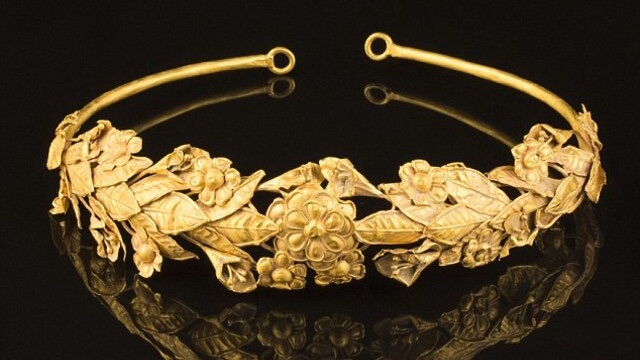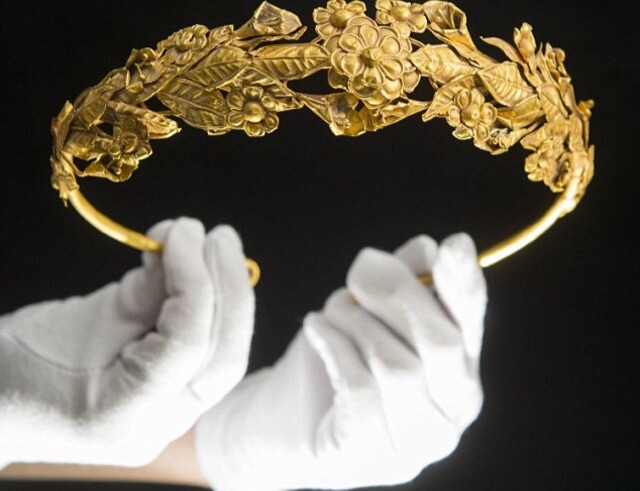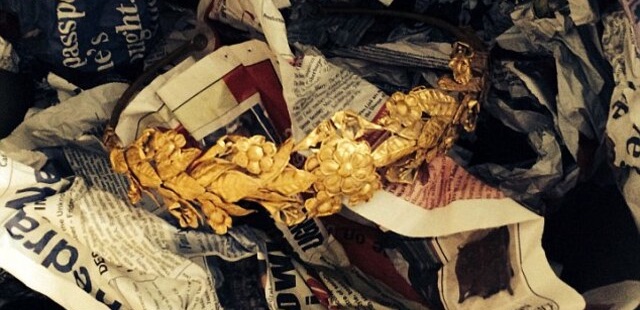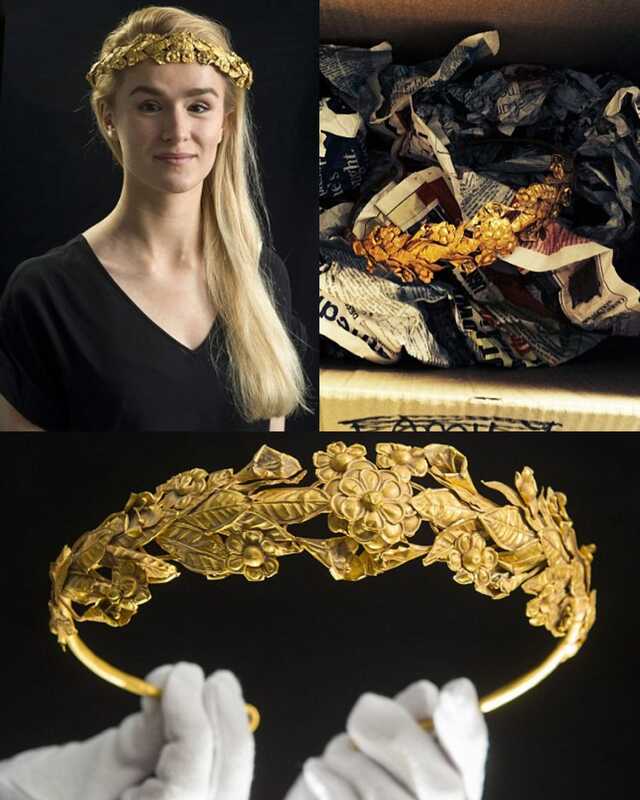Hidden treasures occasionally blur the line between legend and reality. In a quiet Somerset cottage, an astonishing 2,300-year-old gold crown from Ancient Greece was found tucked away in a simple cardboard box under a pensioner’s bed. This unexpected discovery reveals the extraordinary craftsmanship and cultural splendor of a bygone era, leaving experts and the public in awe.
The Discovery of the Gold Crown
The story began with a simple act of tidying up. The elderly owner, who wishes to remain anonymous, stumbled upon the crown while sorting through items inherited from his grandfather. Packed away in a tatty cardboard box filled with old newspapers, the artifact was brought to light when valuers from Duke’s of Dorchester auction house were invited to inspect the collection.

When auctioneer Guy Schwinge peeled back the layers of newspaper and uncovered the crown, he was astonished. Measuring eight inches across and weighing approximately 100 grams, the wreath’s pure gold design shimmered as though it had been untouched by time. The pensioner’s disbelief turned to amazement when the crown was valued between £100,000 and £200,000, a far cry from its humble resting place under a bed.
A Closer Look at the Gold Myrtle Wreath
The artifact is a fine example of a myrtle wreath, a type of ceremonial crown crafted in Ancient Greece. These wreaths were designed to imitate the natural foliage of myrtle, laurel, or olive branches, which were symbolic of virtues such as peace, wisdom, and triumph. This particular piece is thought to date back to around 300 BCE during the Hellenistic period, a time of cultural flourishing following Alexander the Great’s conquests.
Made entirely of gold, the wreath was hammered out by skilled goldsmiths, reflecting the exceptional craftsmanship of the era. Despite its age, the crown remains remarkably well-preserved, with its intricate floral details still visible. Bits of dirt embedded within the gold suggest that the wreath may have been buried, possibly as a funerary offering for a high-status individual.

The Cultural and Historical Significance of Gold Wreaths
Gold wreaths like this one were not merely decorative; they carried profound cultural and symbolic meaning in Ancient Greece. Often awarded as prizes in athletic and artistic competitions, these crowns were a mark of honor and achievement. They were also worn during religious ceremonies and festivals, connecting the wearer to the gods and reinforcing communal values.
In some cases, gold wreaths were placed in tombs as funerary offerings, signifying the deceased’s virtue and status in life. This practice became more prevalent during the Hellenistic period when Alexander the Great’s conquests increased the availability of gold in Greece. The wreath’s delicate nature meant that it was reserved for special occasions, adding to its aura of exclusivity.
The discovery of this crown draws parallels to other famous finds, such as the gold wreath recovered from the tomb of Philip II of Macedon, Alexander the Great’s father. These artifacts not only showcase the artistry of ancient goldsmiths but also offer valuable insights into the social and religious practices of the time.


The Journey of the Crown
How this extraordinary artifact ended up in a Somerset cottage remains a mystery, but its journey offers an intriguing story. The current owner’s grandfather was known to have been an avid collector with a passion for archaeology and the ancient world. He traveled extensively during the 1940s and 50s, visiting regions with historical ties to Alexander the Great, such as the northwestern frontier of India.
It is believed that the grandfather may have acquired the wreath during one of his travels, though its exact origins are unknown. For decades, it lay forgotten among other inherited items, its significance unrecognized until recently. Similar gold wreaths have appeared at auctions over the years, including one sold in 2012 for nearly £200,000, highlighting the rarity and value of such artifacts.

The Auction and Its Legacy
The crown is set to go under the hammer at Duke’s of Dorchester, where it is expected to fetch a significant sum. Such discoveries are rare, and the auction is generating excitement among collectors and historians alike. The challenge, however, lies in authenticating and preserving artifacts of this nature. Despite its remarkable condition, the wreath’s delicate structure requires careful handling to ensure its longevity.
Beyond its monetary value, the crown represents a tangible connection to Ancient Greece’s rich cultural heritage. Its discovery serves as a reminder of the enduring legacy of the Hellenistic period, a time when art, science, and philosophy flourished. For historians, it provides a valuable opportunity to study the craftsmanship and symbolism of ancient artifacts. For the public, it is a chance to appreciate the beauty and ingenuity of a civilization that continues to inspire.

Conclusion
The discovery of the 2,300-year-old gold crown is a testament to the surprises that history can hold. From a dusty box under a bed to an extraordinary relic of Ancient Greece, the crown’s journey captivates and inspires. It serves as a reminder of the timeless artistry and cultural richness of the past, encouraging us to preserve and celebrate these treasures for future generations. As the crown prepares to find a new home, its story continues to shine as brightly as the gold from which it was crafted.
